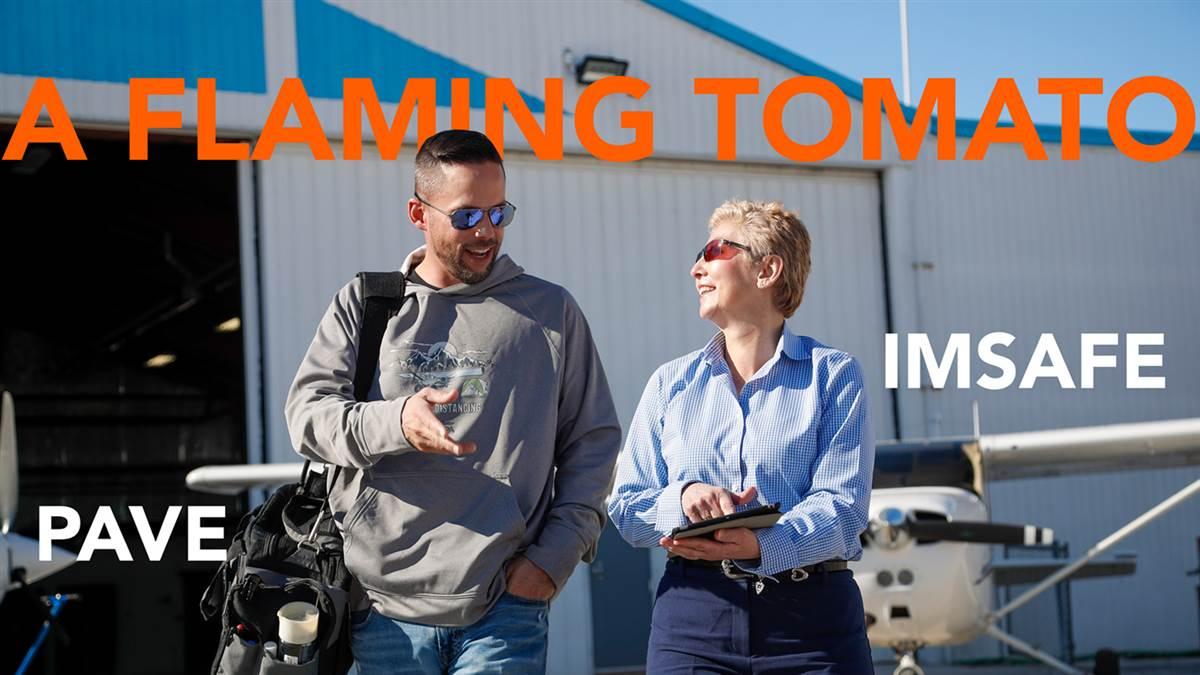IMSILLY
(Inventive mind slime inevitably leading to liquification of your brain)
By Paul Smeltzer
Well-meaning people who have the gift of memorization have inflicted we less fortunate with the gift of acronyms, the bane of student pilots for generations. The sheer number of acronyms in aviation and flight training is stunning. Flight instructors teach them, pilot examiners test them, and students memorize them, but do we really learn and understand the what, why, and how behind them?

The purpose of acronyms, outside of occasional amusement of course, is as a teaching aid. I don’t know that they are a good learning aid, however, unless you are good at memorization. Perhaps their best use is as a source for test material. Be assured, you will not successfully get through flight training without encountering them and being encouraged to commit them to memory. It might be on the test.
I am not a CFI, but I have held five different instructor certifications over four decades and have managed not to learn or teach a single acronym until I entered flight training a number of years ago. As a student pilot I found an inordinate focus on teaching/learning acronyms. Each new acronym seemed to be connected to learning a regulation, checklist, or as a memory jogger necessary to passing a test—after all passing the test is the goal. Thus we have A TOMATO FLAME. What is it and why is it? It references FAR 91.205, which spells out minimum instruments and equipment necessary for VFR day, VFR night, IFR, and rotorcraft. It also has a high probability of being on your checkride. Checkrides are open book; just bookmark it. If asked, open up the FAR/AIM and read it out loud. You passed!
But, did you learn anything about aircraft instrumentation and equipment, and why those particular instruments made the list? Understanding each instrument’s function leads to an understanding of why it is on the list, and its role for safe operation of an aircraft. What about other instruments not on the list that a pilot may find useful or necessary on their personal list of critical instruments? We are encouraged to have minimum weather go/no go criteria, so what’s your personal minimum go/no go instrumentation? If you actually think about it rather than memorizing A TOMATO FLAME, you may come to the realization that a radio, turn and bank indicator, attitude indicator, fuel pressure gauge, climb/descent indicator, heading indicator, GPS, or any navigation aids other than a magnetic compass, charts/maps, transponder, or ammeter are not on the FAR91.205 minimum list. The key word here being “minimum.” Be wary of operating at minimums—they generally are high risk.
Place yourself in the cockpit of the airplane you are going to fly your family in. What instruments/equipment do you need to safely fly from point A to point B? What information do you need? Which instruments will provide that information? Where is it located on the instrument panel? Being a safe pilot is just as much about making good decisions as it is about manipulating the aircraft. You need good information to make good decisions, and the instruments provide you with information. You are flying at 3,000 feet and the engine quits. What instruments are going to tell you about the engine, what instruments do you need to rely on to safely land the airplane without an engine? What information do you need and where are you going to get it? Learn the answers to these questions, A TOMATO FLAME may not be the answer.
It has been my experience as an instructor and a student that the critical thing to learn is how and why a system operates. That “system” can be a tool, a machine, you, or the weather. If you learn the “nuts and bolts” of how an aircraft works you can operate it more efficiently, proficiently, effectively, and safely. If you know how it works you are in a much better position to know what to look for and what to do if the system fails, or there is an anomaly. In many ways learning acronyms is easy, learning the how and why something works requires a deeper dive, a more robust learning process.
Take a deeper look at acronyms beyond memorizing letters and associated words. Look at what there is to learn behind the letters—if it is a regulation, bookmark it. If it is something like PAVE and IMSAFE, which are risk assessment acronyms, understand the why behind it and how to conduct the assessment. Your time in flight training is the time to learn how to effectively do risk assessments, and learn systems as well as proper procedures.
You have or will spend some time and money learning to fly, so don’t shortchange yourself by learning to pass the test. Learn what you need to learn to be a good and safe pilot. If you learn beyond minimums and memorizing letters, you won’t have to worry about the test. You don’t want to be the person flying home from a check ride thinking IMSILLY because you didn’t learn the how and why.


